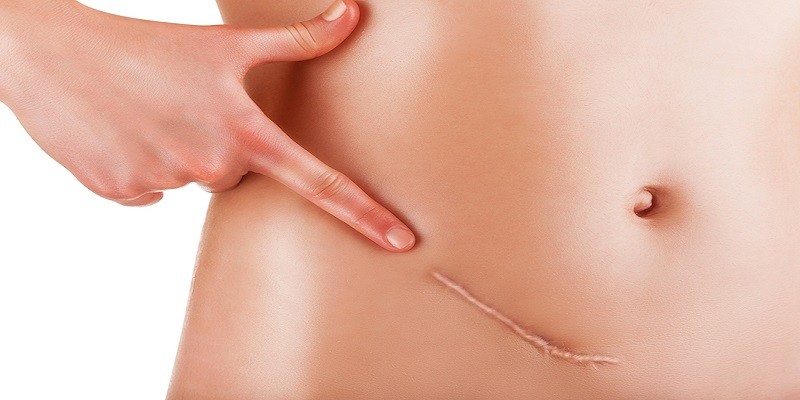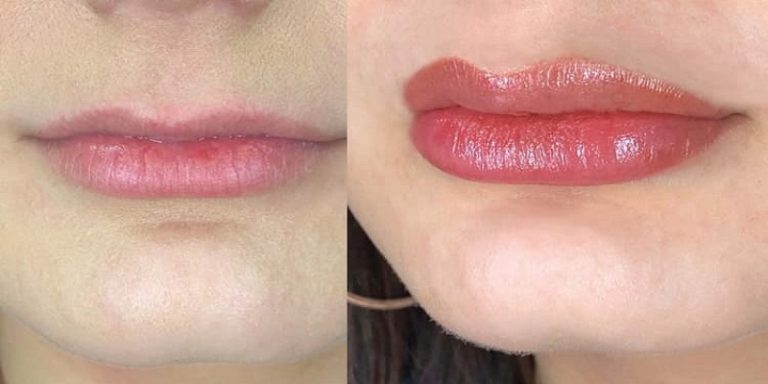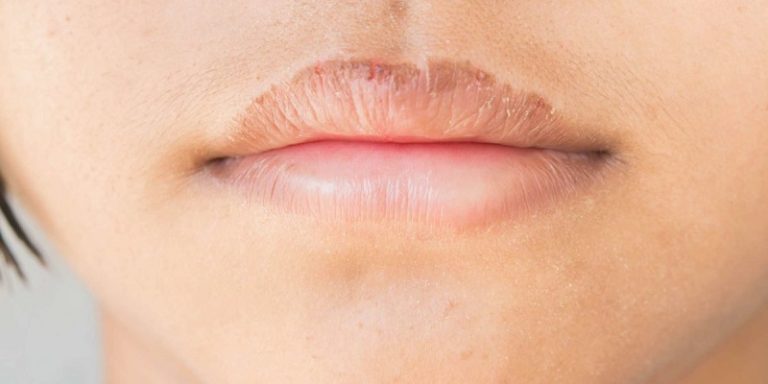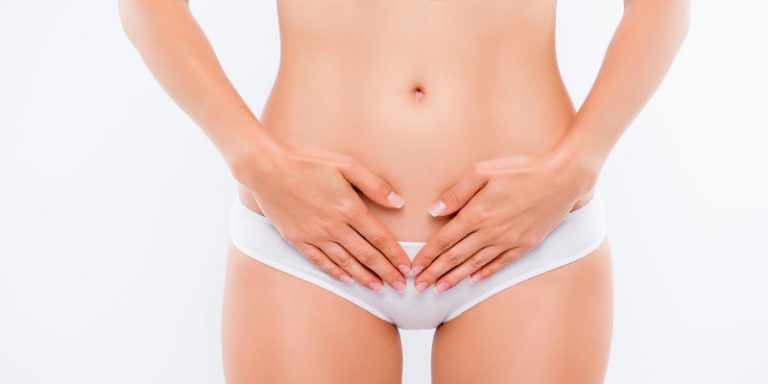How To Get Rid Of Lipo Scars?

Last Updated on June 18, 2025 by Jaclyn A. Neeley
Liposuction is a safe and effective way to remove fat from the body, but it can also leave behind scars. Fortunately, there are several ways to reduce the visibility of lipo scars.
First, you should massage scar tissue with moisturizing lotion or oil twice daily for five minutes at a time.
This will help soften and break down the collagen in the area. Additionally, sunscreen should be applied whenever going outside as this will prevent further damage from UV rays.
You may also want to consider laser treatments such as fractional resurfacing or microneedling which can improve skin texture and tone while helping reduce redness and discoloration caused by the lipo procedure.
Chemical peels are another option that can help smooth out unevenness while stimulating new cell growth in affected areas.
If these methods do not work, surgery may be an option depending on your individual situation. This can involve excision of excess scar tissue or skin grafting if necessary to achieve desired results.
- Use a silicone-based scar gel: Applying a silicone-based scar gel can help to reduce the appearance of lipo scars. Applied directly on the affected area, this product helps to soften and flatten out any existing lipo scars.
- Try laser treatments: Laser treatment is one of the most effective methods for reducing the visibility of lipo scars. Depending on your individual case, it may be necessary to undergo multiple treatments in order to achieve desired results.
- Utilize injectable fillers: Injectable fillers such as hyaluronic acid are often used to help reduce the appearance of Lipo Scars by filling in and plumping up areas where fat has been removed or redistributed during surgery or through natural aging process.
- Consider microneedling: Microneedling works by creating tiny punctures in the skin which triggers collagen production and improves circulation leading to increased healing potential within damaged skin cells, helping reduce visibility of Lipo Scars over time with regular useage.
How to Lighten Lipo Scars?
Liposuction is a popular cosmetic procedure that removes fat from the body. Unfortunately, it can leave behind scars that may be difficult to remove. Fortunately, there are some methods available to lighten lipo scars such as topical creams or ointments, laser treatments, dermabrasion and chemical peels.
To achieve the best results with any of these treatments, it’s important to follow your doctor’s instructions carefully and consult with a professional who specializes in scar removal for personalized advice on how to target your particular scarring.

Credit: www.youtube.com
Do Liposuction Scars Go Away?
Liposuction is a popular cosmetic procedure that can help people achieve the body they desire. However, it’s important to consider not just the potential benefits but also any possible side effects, such as scarring. Scarring after liposuction is common and expected; however, you may be wondering if these scars will eventually go away or become less noticeable over time.
The good news is that most liposuction scars do fade with time and won’t be visible once healed. Depending on your skin type and other factors like how deep the incisions were made during surgery, it could take anywhere from several months to up to one year for the scars fade away completely. Even after complete healing, there are still things you can do to keep them from becoming more prominent: use sunscreen when outdoors, avoid sun exposure while they’re healing (especially in the first few weeks), reduce inflammation through diet and exercise modifications, wear loose clothing at all times and avoid scratching or picking at them altogether.
How Long Does It Take for Scar Tissue to Go Away After Liposuction?
Scar tissue is a normal part of the body’s natural healing process, but it can be unsightly and uncomfortable. After undergoing liposuction surgery, patients may be concerned about how long it will take for scar tissue to go away. The answer depends on several factors including the size of the incision made during liposuction and the patient’s own healing rate.
Generally speaking, most people can expect to see some improvement in their scars within 6 months after having liposuction. However, complete resolution may not occur until between 9-12 months post-surgery because full maturation of the collagen fibers that make up scar tissues takes time. During this period of recovery, regular massage therapy sessions or use of topical creams containing silicone or other ingredients known to help soften and flatten scars are recommended for optimal results.
Additionally, keeping exposed areas out of direct sunlight and avoiding picking at any raised areas helps reduce inflammation throughout the wound healing process which further aids in reducing visibility of scarring from lipo procedures over time.
How Do You Break Up Hard Spots After Liposuction?
Breaking up hard spots after liposuction can be a challenge. Depending on the approach used, there are a few different techniques that may help you. One option is to use massage therapy to break down the fat deposits and improve circulation in the area.
Massage can also reduce swelling and discomfort as well as help with lymphatic drainage of any excess fluid in the treated areas. Another technique is ultrasound-assisted lipolysis (UAL), which uses sound waves to break down stubborn fat cells while preserving skin and tissue integrity during treatment. It’s best to consult your doctor if you’re considering UAL since it requires specialized equipment and should only be done by trained professionals.
Other treatments such as laser lipolysis, mesotherapy or radiofrequency energy can also help improve contouring results after liposuction but these procedures should always be performed by an experienced cosmetic surgeon for maximum safety and effectiveness.
Why are My Lipo Scars So Dark?
If you’ve recently undergone liposuction, you may be wondering why the scars on your body are so dark. The answer is that there are a number of factors at play when it comes to scarring after any type of surgery, and lipo in particular. First off, darker skin tones tend to show more pronounced scarring than lighter skin tones because melanin pigment tends to make the healing process take longer and results in a darker tone for the scar tissue.
Additionally, if stitches were used during your procedure or if you had an incision made during your liposuction session then this could also result in darker scars due to increased inflammation and swelling from being cut open. Age can also play a role as younger people tend to heal quicker while older people usually have slower healing times resulting in darker scars. Lastly, genetics is another factor that contributes towards how well one heals with some people having better overall wound healing capabilities than others which can cause their post-lipo scars to be particularly dark or raised looking compared to other individuals who have similar procedures done on them.
Ultimately the best way to reduce the appearance of dark lipo scars is by using proper aftercare techniques such as keeping the area clean and moisturized with silicone gel dressings which help speed up recovery time while minimizing potential discoloration from forming on your skin surface.
What to Use on Liposuction Scars – Dr. Sheila Nazarian
Conclusion
Liposuction scars can be difficult to treat, but with the right combination of lifestyle changes and medical treatments, they can be minimized over time. With a healthy diet and regular exercise, you can reduce excess fat that may contribute to scarring. Additionally, skin care products containing retinol or glycolic acid have been shown to help soften lipo scars.
Finally, more intensive treatments such as laser therapy or dermabrasion may help improve the look of liposuction scars if needed. In conclusion, although there is no guaranteed way to remove liposuction scars completely, following these tips can significantly reduce their appearance and improve your overall self-confidence.






